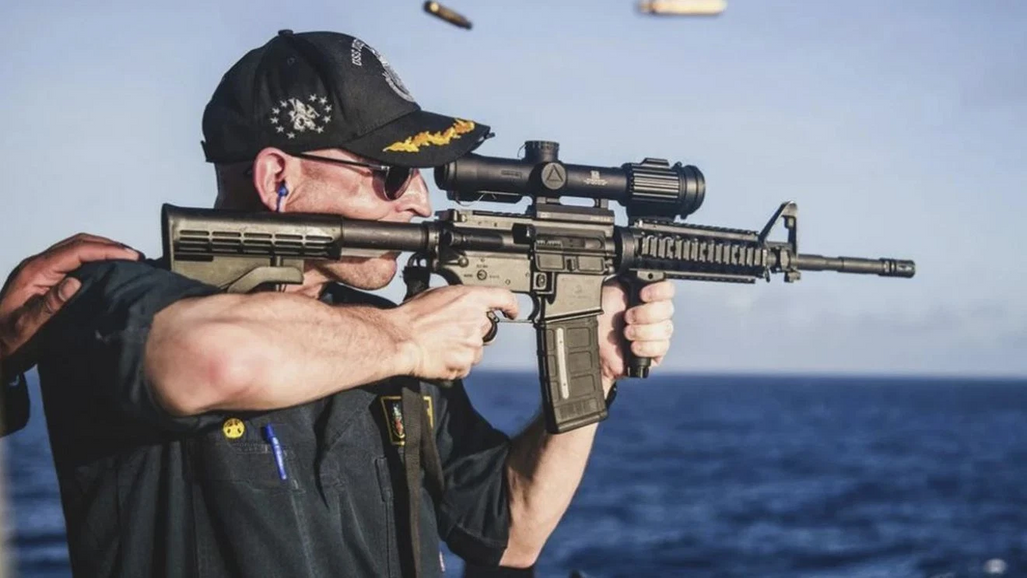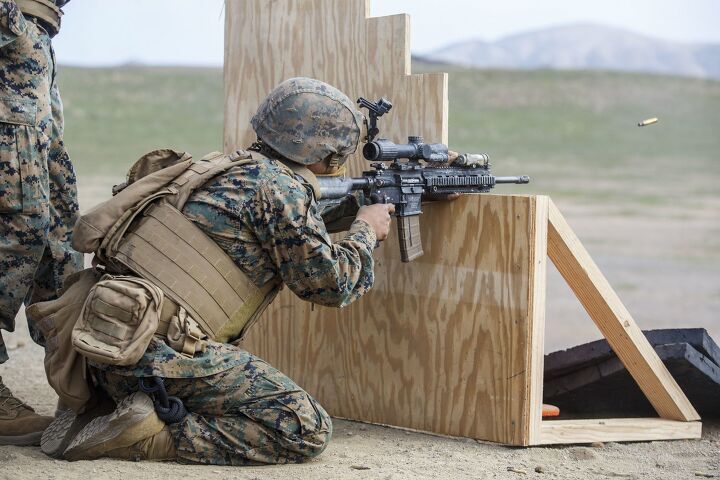
History of the VCOG
Posted by Monstrum on Oct 13th 2025
The VCOG or Variable Combat Optical Gunsight is a low-power variable optic designed and manufactured by Trijicon in 2013. When it entered the market, it was heralded for its clear glass and extreme durability when compared to other LPVOs of the time. It saw limited adoption at first in the U.S. Military by some special operations forces, but as of 2021 it has become a standard optic of choice for the United States Marine Corps designated the SCO or Squad Common Optic.
Predecessor to the VCOG
The VCOG’s design began after the success of Trijicon’s ACOG sight. Taking design cues from its predecessor, the VCOG was similarly designed for simplicity and extreme durability and quick snap shooting conducive to the Bindon Aiming Concept thanks to its bright reticle.
Like the ACOG that preceded it, the VCOG was specifically designed to hold up to military standards for durability. Trijicon advertises that it was tested to Mil-STD-810G, a series of tests approved by the DoD to simulate field conditions. The body of the optic is made out of forged 7075-T6 aircraft-aluminum alloy and the optic is waterproof down to a depth of 66 feet.
Design of the VCOG
Today, there are two versions of the VCOG available in several reticle options: The original version, a 1-6x with a 24mm objective lens, and a newer 1-8x version with a 28mm objective lens that was recently adopted by the USMC. All versions of the VCOG have first focal plane reticles and bright, electronically illuminated reticles.
The VCOG differs from other low-power variable optics in that the scope body and its mount are integrated into one single unit meaning the optic never has to be levelled. The scope body can be separated from its mount (it attaches via the same mounting interface as the ACOG) although it was designed so that it never has to be—one less moving part means one less potential point of failure. The windage and elevation adjustments are neither exposed turrets nor numbered for making known adjustments. This optic is designed to be zeroed once and held over to make long range shots rather than dialed in.
Everything about the VCOG’s design, from its unmarked windage and elevation turrets to its fixed mount, revolves around simplicity and durability. This is an optic designed to be issued to the infantry grunts en masse and hold up to the level of abuse a standard issue optic is likely to face. What it lacks in features that would be appreciated by users who are experienced with precision rifle optics, it makes up for in durability. The VCOG is an optic that can give the average infantryman the close to long range capability of an LPVO in a package that can hold up to the rigors of combat.

VCOG in Military Service
The VCOG saw limited adoption by some special operations forces since its release in 2013, but it wasn’t until 2021 that the VCOG was selected by the U.S. Marines. Looking to replace their aging ACOGs, the USMC wanted an optic that could complement their adoption of the M27 IAR. Like the rifle it was adopted to be used with, the VCOG is a versatile optic that can flex into multiple roles—it can handle close quarters and long range shooting, but also like the M27, it’s heavy, especially compared to its predecessor, the ACOG (23.2oz vs 14.9oz).
Is the VCOG the Right Optic for You?
The VCOG is a very durable and simplified LPVO. It was designed with as few moving parts as possible even foregoing commonplace features like a separate mounting interface or turret style windage and elevation adjustments. It is an optic purpose-built for military service putting ruggedness ahead of quality of life features, and while it does have excellent glass and a bright reticle, it also has a steep price tag to boot. MSRP for the VCOG starts at $3,136 and goes up to $3,528 depending on reticle.
If you’re looking for the most durable LPVO that money can buy, the VCOG is probably a top contender; but, for the average shooter, the level of durability that it offers is far above and beyond what is needed. For example, the VCOG is waterproof down to a depth of 66 ft. way overkill for what it would likely need to be rated for general infantry use let alone the average civilian shooter.
The VCOG also lacks a number of quality of life features most civilian shooters would appreciate like marked turret style adjustments for windage and elevation. The adjustments on the VCOG are designed to be “set it and forget it”, where most other LPVOs are at least marked for dialing in adjustments.
Finally, there’s the price. At $3,136, the VCOG is an expensive option in a market filled with dozens of high quality alternative options that cost a lot less. By modern standards, its 12-year old feature set could be considered lacking for what modern shooters need and its ruggedness, while a boon to its use in military service, is an unnecessary and expensive theoretical benefit that likely wouldn’t be useful to the average civilian shooter.
Realistically, a more modern LPVO that offers similar technical specs in terms of optical performance is probably a better buy for most.
Conclusion
To sum up, the VCOG is a highly durable LPVO that lives up to Trijicon’s reputation for rugged optics. As it was originally designed, its simplified and solid design still holds up to this day and it is highly regarded among the Marines it is issued to.
But for all that makes the VCOG an excellent military optic, it is not the ideal optic for most civilian shooters. Its overkill ruggedness and oversimplified design paired with a high price tage make it an impractical choice for all but a niche subset of shooters whose use-case demands durability second to none.
Most civilian shooters would be better served by an optic that is better designed for their use-case rather than the military’s. For comparison’s sake, we design our optics to deliver the best value from a price to performance perspective for the average shooter. Our own Banshee 1-6x24 LPVO has virtually identical specs to the 1-6x24 VCOG. You may not be able to dive 66 feet underwater with our scope, but it only costs $129.95 vs. $3,136 for the VCOG.
Check out our full suite of practically designed and affordably priced LPVOs to find the perfect match for your next build.

